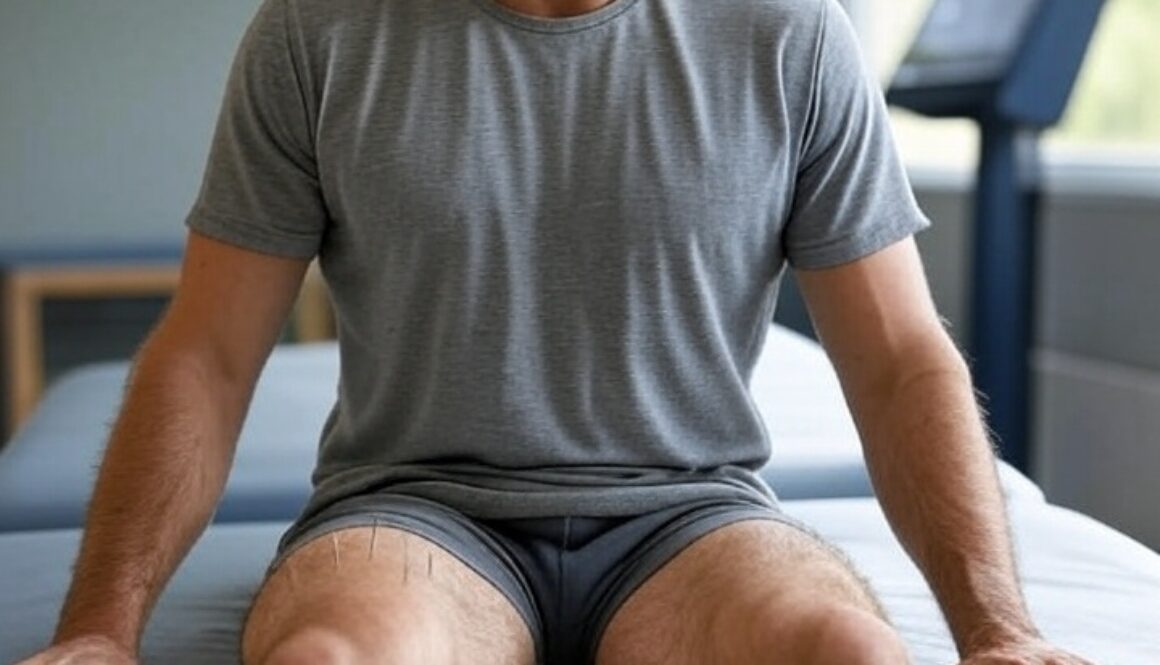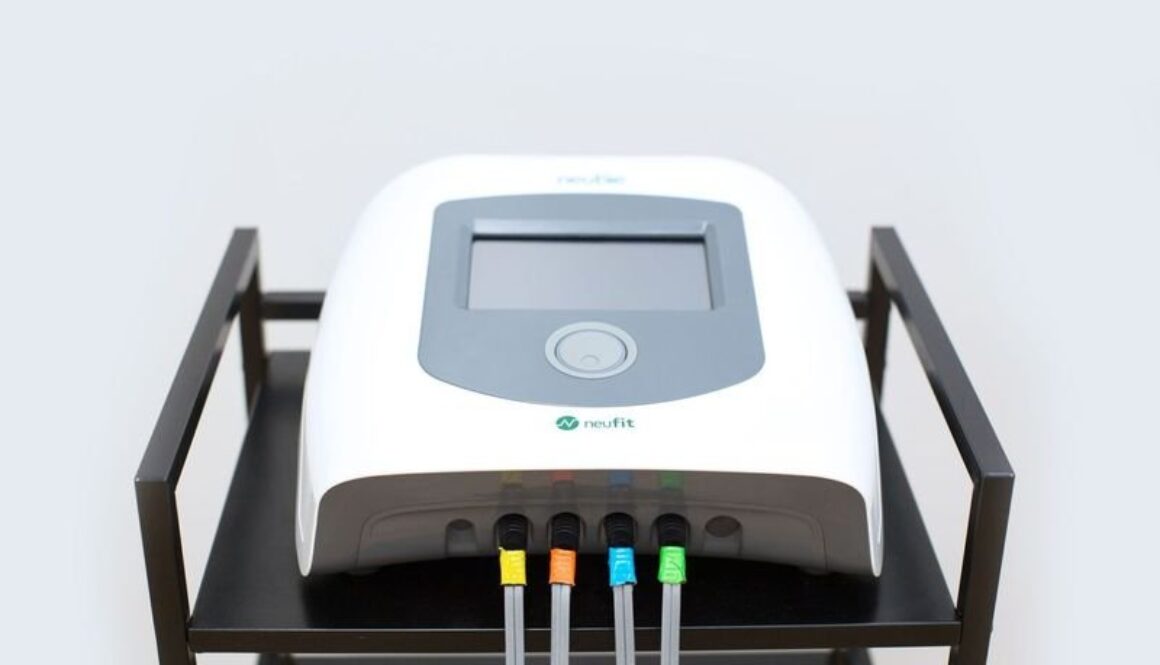Can dry needling help alleviate pelvic floor pain?
Dr. Scott A. Jones
Physical Therapist
Hey everyone, welcome back! This week we’re going to begin discussing how dry needling can assist with pelvic floor pain and dysfunction as well as lower back pain and dysfunction. For those of you new to this blog, I have been dry needling since 2009 when I was a captain in the air force. My journey with dry needling has been an interesting one, from being completely skeptical and resistant at first, until this point, when I firmly believe that this is one of the most efficient and effective pain control and functional reset modalities available to healthcare practitioners.
I first stumbled on dry needling in the Air Force while training with the Army. The Army was already using trigger point dry needling in deployed areas and combat zones, the United States Air Force had not yet adopted this technique. I was the first practitioner of trigger point dry needling in the United States Air Force and I never looked back. Since that time, the United States Air Force and the rest of the United States military has adopted this technique to continue helping military members and their families, including all Tricare and TriWest beneficiaries, to help overcome overuse injuries, stay in deployment areas without having to medevac due to injury, improve outcomes after musculoskeletal surgical procedures, and overcome minor strains and sprains due to sports.
So that’s a bit of my history and background. keep in mind that dry needling is not acupuncture. While acupuncture is rooted in thousands of years of Eastern metaphysical medicine, trigger point dry needling and functional dry needling have built off of this amazing historical practice and rooted the procedures and standards in orthodox Western medicine and medical principles. While the East takes a look at energy fields and meridians, Western medicine focuses on neuromuscular pathways and function.
With that said, let’s get into our topic this week, in which we will discuss the role of dry needling in the management of pelvic floor and lower back pain.
As we have already seen, dry needling continues to be increasingly embraced by medical practitioners here in the United States and across the globe. Due to its adoption by the United States military, and access to the technique provided by medical insurance agencies such as Tricare and TriWest, We now have more than 20 years of research demonstrating its efficacy with regard to things such as lower back pain, ankle pain, knee pain, shoulder pain, neck pain, and on and on. However, dry needling has also shown significant progress in the treatment of pelvic floor pain as well as concomitant benefit for lower back pain since the two are so closely related. Here we will discuss mechanisms, efficacy, and the evidence-based practice supporting dry needling as a therapeutic option for both men and women in the continuing quest to find answers and assistance in the area of pelvic floor health and lumbo-pelvic pain.
In order to begin creating a framework for understanding pelvic floor pain, we must first consider that the pelvic floor is a network of muscles across the bottom of the pelvis that support a number of organs including the bladder, uterus, and rectum. If dysfunction begins to occur here, this network of muscles can lead to a wide variety of challenging medical conditions, including urinary incontinence, constipation, sexual dysfunction, and any of these can lead to Chronic pelvic pain. In addition, lower back pain is widely recognized to be closely connected to multiple pelvic floor medical issues, and can either result from pelvic floor dysfunction or contribute to pelvic floor dysfunction and pain due to direct structural connections that lead to compensations in normal functional neuromuscular patterns.
So let’s return briefly to a discussion of how dry needling works. using thin filiform needles that are not used in the administration of medication, physical therapists and other medical health practitioners insert these needles into tight bands of muscular tissue, also known as trigger points. These trigger points are typically hyper irritable areas within skeletal muscle. When the needle is inserted, many times a spasm will occur which is also known as a local twitch response. This small and brief spasm is believed to help reset the neurologic feedback system of the muscle, decreasing muscle tightness, decreasing joint stiffness and pain, and restoring normal function of the structure. Again, while dry needling uses similar tools in comparison to acupuncture, traditional Chinese medicine does not focus on the understanding of Western anatomy, physiology, and neurology.
So, let’s take a look at some of the benefits of dry needling for pelvic floor pain in both men and women. A 2012 study by Fitzgerald et al. asked questions about the benefits of dry needling for women with chronic pelvic pain. This research demonstrated significantly reduced pain and significantly improved quality of life for women with chronic pelvic pain after several sessions. this study focused on the tight bands of myofascial trigger points in the pelvic floor, and the investigators suggest that dry needling should be considered a potential Cornerstone in managing chronic pain for this group of patients.
Another study by investigators Anderson et al. in 2015 demonstrated significant efficacy by functional dry needling treatment for women suffering from pelvic floor dysfunction. the benefits included both chronic pain during intercourse as well as urinary frequency.
And what about men? It turns out that functional dry needling and trigger point dry needling is not just for women. Investigators Anderson et al. conducted a study in 2009 for men with pain due to chronic prostatitis as well as chronic pelvic pain syndrome. in this study the investigators performed dry needling for myofascial trigger points in the pelvic floor of men. the outcomes were highly promising, including significant decreases in pain and improvements in quality of life, highlighting the benefit of dry needling for pelvic floor dysfunction for men.
In another study, a case series by Shoskes et al. in 2016 also demonstrated that pain and dysfunction in men suffering from pelvic floor spasms can be provided relief through functional dry kneeling for the pelvic floor, which also demonstrated improvements in lower back pain and discomfort for the subjects of the study.
As we mentioned above, the lower back and pelvis are closely related and connected neurologically, physiologically, and biomechanically. regardless of where you start, regardless of what you think came first, whether it be the chicken or the egg, if the muscles of the pelvic floor are dysfunctional, or if the muscles of the lower back are dysfunctional, each end of this equation can alter posture and movement patterns, which in turn can lead to increased lower back pain, increased pelvic pain, and a truly frustrating positive feedback loop in which either area increases dysfunction of the other.
By way of example, Dunning et al. conducted a systematic review in 2014 which analyzed efficacy of dry needling for chronic lower back pain. In this review the investigators concluded that dry needling could significantly reduce pain and improve function, with several studies specifically noting benefits for patients with disc related lower back pain. We want to keep in mind that when talking about disk related lower back pain, what we’re really talking about is the increased likelihood that there is significant compression of the pelvis in addition to the spine. Discogenic disease of the lower back rarely occurs in isolation. We need to consider the structures both above and below, and determine how dysfunction in adjacent areas is contributing.
In another study conducted by Dufour et al. In 2018 revealed that lower back pain was much more common in women who visited their physician with reports of pelvic floor dysfunction. This indicates a direct link demonstrating that trigger point dry needling treatment in one area will likely benefit the other. In the study, functional dry needling in one area, whether it be the pelvic floor or the lower back, demonstrated effective muscle tension reduction in both areas.
As I have stated many times in this blog, we also have lots of evidence demonstrating that trigger point dry needling can be significantly enhanced with electrical stimulation. In 2022, Peffeault et al. examined the effect of dry needling with electrical stimulation of musculoskeletal conditions, including but not limited to Chronic shoulder and chronic lower back pain. This systematic review found that the addition of electrical stimulation to dry needling not only significantly reduced pain but also improved the functional movement of the joint more effectively than dry needing alone. This was hypothesized to be the result of additional increased blood flow and muscle relaxation as a result of the electrical stimulation.
In a second study demonstrating the efficacy of electrical stimulation, a case report by Gattie et al. in 2017 highlighted the use of electrical stimulation with dry needling on a patient with chronic lower back pain with radicular neurologic symptoms. In just four treatment sessions, a significant decrease in pain as well as Improvement in function was noted in the patient being treated. The authors attributed the success of the treatment to the combined effects of dry needling and electrical stimulation toward decreasing irritation at the nerve as well as muscle spasticity.
So there you have it! as the research continues to show, trigger point dry needling, including the addition of electrical stimulation, is supported by the scientific evidence and effective in managing pelvic floor and lower back pain for both men and women alike. for both United States military service members and civilians alike. This continues to be a truly remarkable, effective, and efficient manual therapy strategy that provides relief for all walks of life across many various conditions. dry needling can directly address myofascial trigger points leading to muscle tightness, pain, joint stiffness, and movement dysfunction, and electrical stimulation only improves upon those benefits.
Very exciting times for people looking for relief from chronic pain and dysfunction! As always, Peak health and performance participates in most insurance plans including medicaid, medicare, Tricare west, and tri-west for active duty military, retirees, and dependence of military service members. Having served in the United States Air Force for 20 years, as both an enlisted service member and officer, we are excited to continue to provide our nation’s Guardians and their families with world class Rehabilitation and strength and conditioning!
References:
- Anderson, R. U., Sawyer, T., Wise, D., Morey, A., & Nathanson, B. H. (2009). Painful myofascial trigger points and pain sites in men with chronic prostatitis/chronic pelvic pain syndrome. The Journal of Urology, 182(6), 2753-2758.
- Anderson, R. U., Wise, D., Sawyer, T., Glowe, P., & Orenberg, E. K. (2015). 6-day intensive treatment protocol for refractory chronic prostatitis/chronic pelvic pain syndrome using myofascial release and paradoxical relaxation training. Journal of Urology, 194(1), 125-131.
- Dunning, J., Butts, R., Mourad, F., Young, I., Flannagan, S., & Perreault, T. (2014). Dry needling: a literature review with implications for clinical practice guidelines. Physical Therapy Reviews, 19(4), 252-265.
- Dufour, S., Vandyken, B., Forget, M. J., & Vandyken, C. (2018). Association between lumbopelvic pain and pelvic floor dysfunction in women: A cross sectional study. Musculoskeletal Science and Practice, 34, 47-53.
- FitzGerald, M. P., Anderson, R. U., Potts, J., Payne, C. K., Peters, K. M., Clemens, J. Q., … & Nyberg, L. (2012). Randomized multicenter feasibility trial of myofascial physical therapy for the treatment of urological chronic pelvic pain syndromes. Journal of Urology, 187(6), 2102-2107.
- Gattie, E. R., Cleland, J. A., & Snodgrass, S. J. (2017). The effectiveness of trigger point dry needling for musculoskeletal conditions by physical therapists: A systematic review and meta-analysis. Journal of Orthopaedic & Sports Physical Therapy, 47(3), 133-149.
- Perreault, T., Dunning, J., & Butts, R. (2022). The impact of dry needling with electrical stimulation on pain and disability in patients with musculoskeletal shoulder pain: A systematic review. Journal of Clinical Medicine, 11(4), 945.
In health,
Dr. Scott A. Jones
Physical Therapist
Movement Performance Coach










